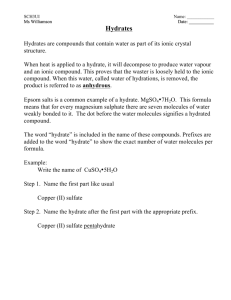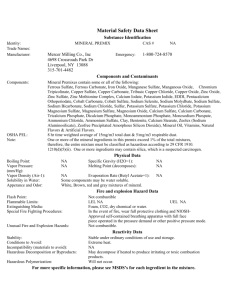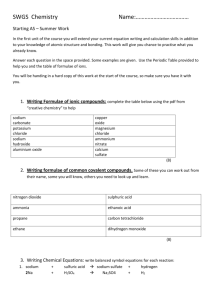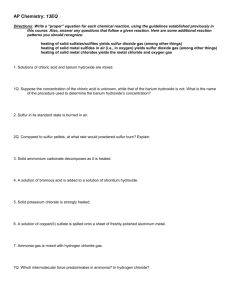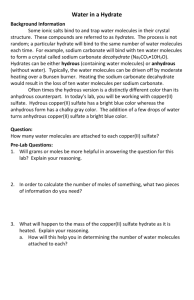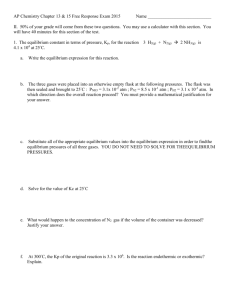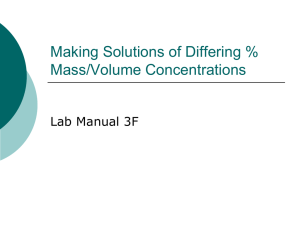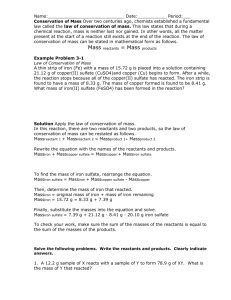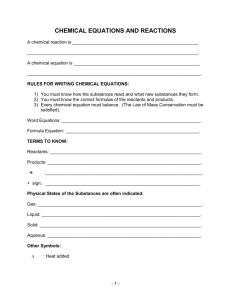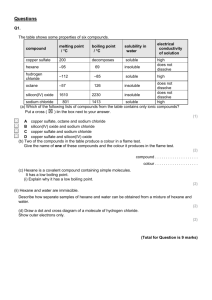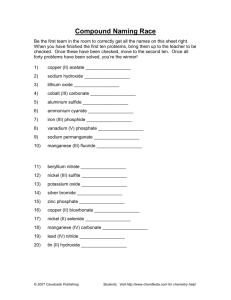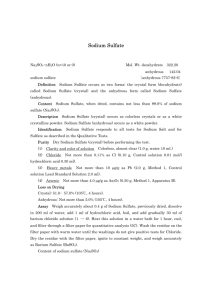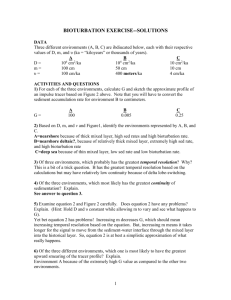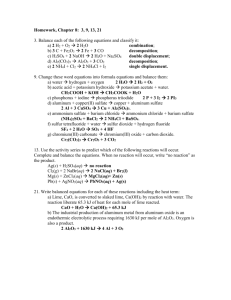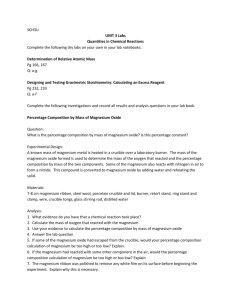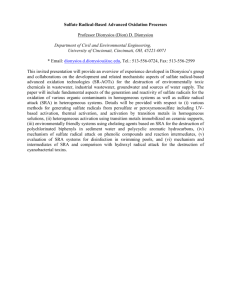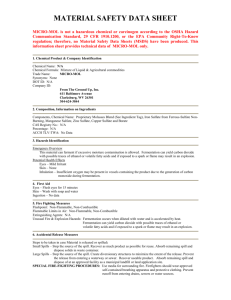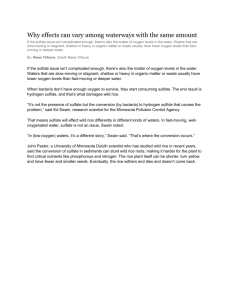Questions on acids and bases
advertisement
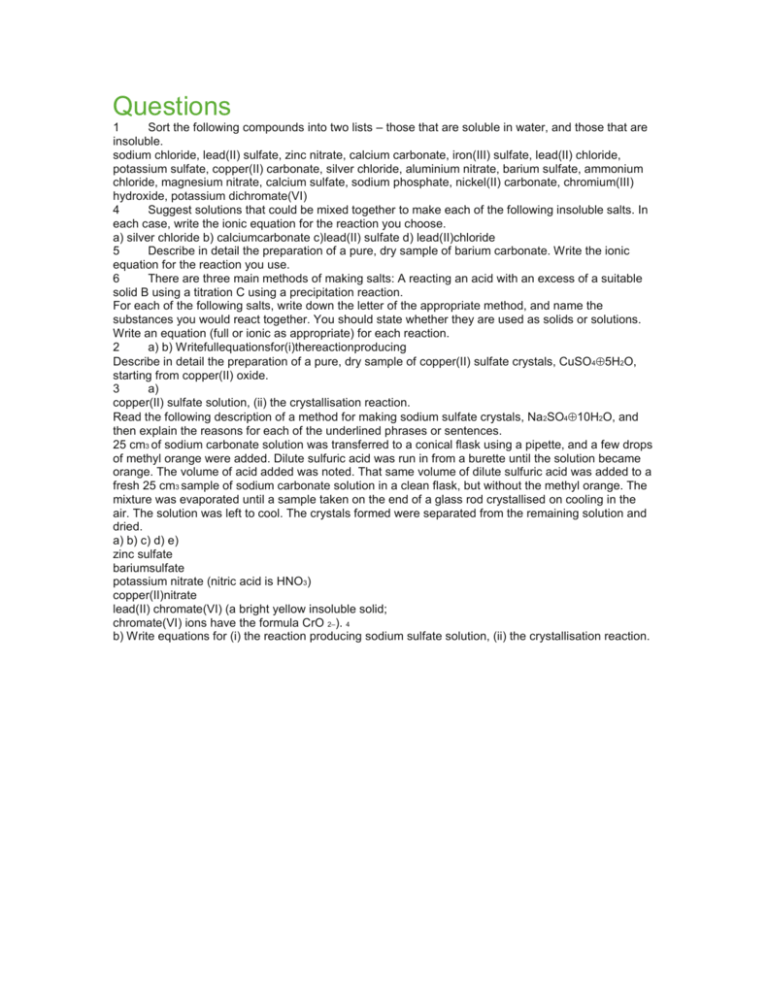
Questions 1 Sort the following compounds into two lists – those that are soluble in water, and those that are insoluble. sodium chloride, lead(II) sulfate, zinc nitrate, calcium carbonate, iron(III) sulfate, lead(II) chloride, potassium sulfate, copper(II) carbonate, silver chloride, aluminium nitrate, barium sulfate, ammonium chloride, magnesium nitrate, calcium sulfate, sodium phosphate, nickel(II) carbonate, chromium(III) hydroxide, potassium dichromate(VI) 4 Suggest solutions that could be mixed together to make each of the following insoluble salts. In each case, write the ionic equation for the reaction you choose. a) silver chloride b) calciumcarbonate c)lead(II) sulfate d) lead(II)chloride 5 Describe in detail the preparation of a pure, dry sample of barium carbonate. Write the ionic equation for the reaction you use. 6 There are three main methods of making salts: A reacting an acid with an excess of a suitable solid B using a titration C using a precipitation reaction. For each of the following salts, write down the letter of the appropriate method, and name the substances you would react together. You should state whether they are used as solids or solutions. Write an equation (full or ionic as appropriate) for each reaction. 2 a) b) Writefullequationsfor(i)thereactionproducing Describe in detail the preparation of a pure, dry sample of copper(II) sulfate crystals, CuSO45H2O, starting from copper(II) oxide. 3 a) copper(II) sulfate solution, (ii) the crystallisation reaction. Read the following description of a method for making sodium sulfate crystals, Na 2SO410H2O, and then explain the reasons for each of the underlined phrases or sentences. 25 cm3 of sodium carbonate solution was transferred to a conical flask using a pipette, and a few drops of methyl orange were added. Dilute sulfuric acid was run in from a burette until the solution became orange. The volume of acid added was noted. That same volume of dilute sulfuric acid was added to a fresh 25 cm3 sample of sodium carbonate solution in a clean flask, but without the methyl orange. The mixture was evaporated until a sample taken on the end of a glass rod crystallised on cooling in the air. The solution was left to cool. The crystals formed were separated from the remaining solution and dried. a) b) c) d) e) zinc sulfate bariumsulfate potassium nitrate (nitric acid is HNO3) copper(II)nitrate lead(II) chromate(VI) (a bright yellow insoluble solid; chromate(VI) ions have the formula CrO 2–). 4 b) Write equations for (i) the reaction producing sodium sulfate solution, (ii) the crystallisation reaction.

